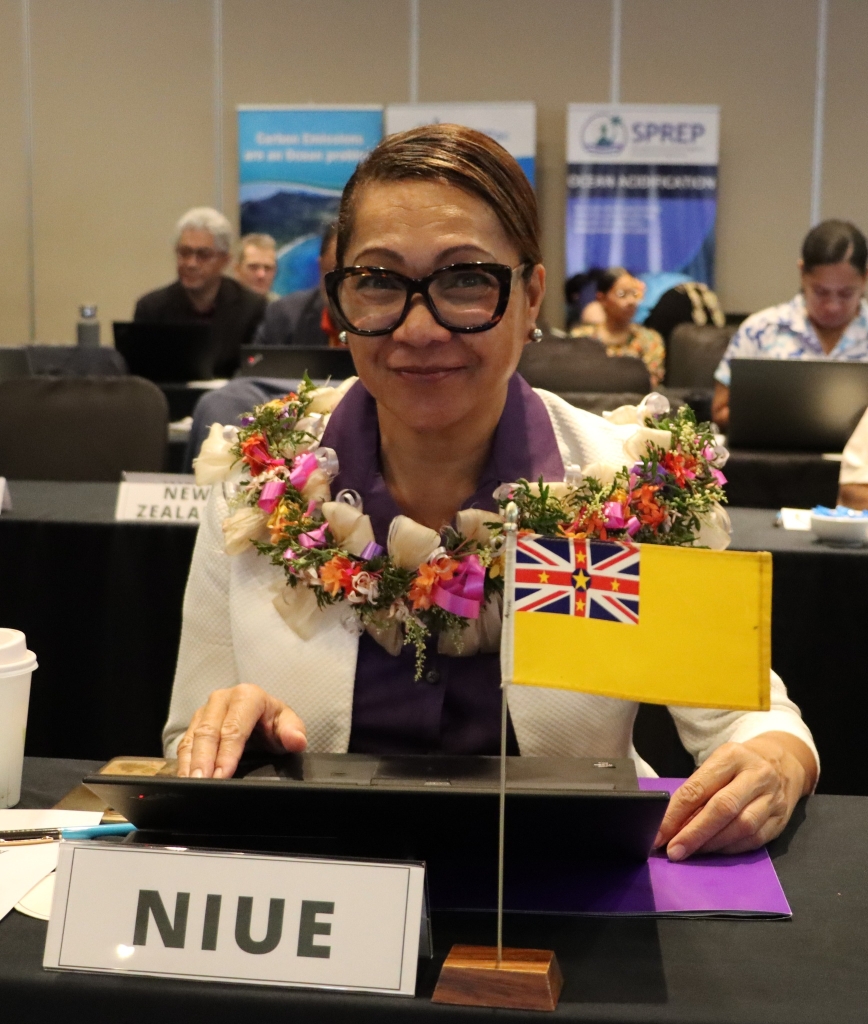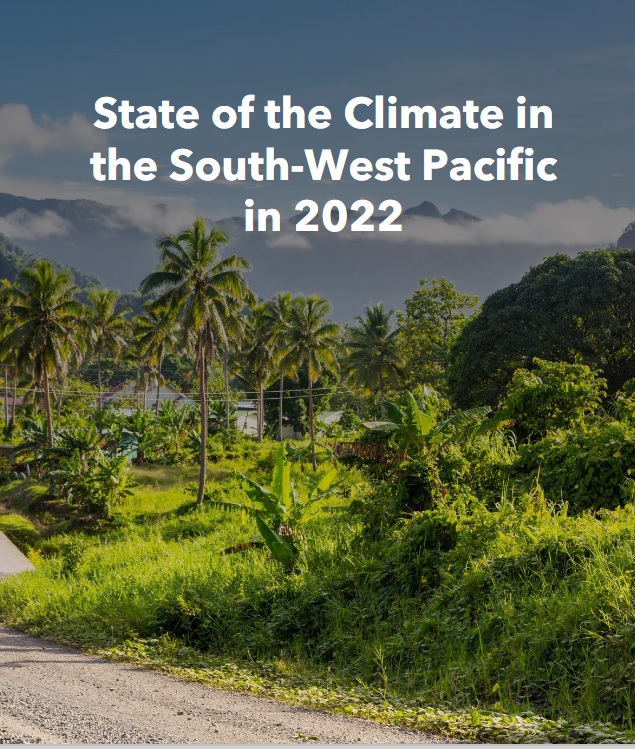
18 August 2023, Nadi Fiji – Weather-related disasters and climate change impacts are unravelling the fabric of society in the South-West Pacific. Sea level rise threatens the future of low-lying islands whilst increasing ocean heat and acidification harms vital and vulnerable marine ecosystems, according to a new report from the World Meteorological Organization (WMO).
The report was released at the Third Pacific Ministerial Meeting on Meteorology (PMMM-3) and the First Development Partners and Donors Engagement Meeting in Fiji. The meetings, which are all interlinked, are guided by the theme: “Sustaining Weather, Climate, Water and Ocean Services for a Resilient Blue Pacific.
The WMO report says that sea-level rise rates were, in general, slightly higher than the global mean rate, reaching approximately 4 mm per year in several areas.
Despite La Niña conditions, marine heatwaves occurred in various parts of the region. The most prominent and persistent marine heatwaves occurred in a large area north-east of Australia and south of Papua New Guinea in the Solomon and Coral Seas, over a period of more than six months.
The ocean has taken up more than 90% of the excess heat in the climate system. Ocean warming contributes about 40% of the observed global mean sea-level rise through thermal expansion of seawater. It is altering ocean currents, indirectly altering storm tracks and affecting marine ecosystems.
“If we are seeing the evidence then there must be action on the ground,” said Hon Moana Ainuu, Miniter of Meteorology of the Government of Niue.
“We must do something. Our efforts and our work must have a positive impact for our people. We cannot sit here and see the evidence in a report such as this and not do anything. Our partners must collaborate with us, work with us for our literal survival. How much more science is needed before we take heed?”

The report, along with an interactive story map, is one of a series of five regional reports and a global report from WMO providing the latest climate insights to inform decision-making.
The three-year-long La Niña event had a clear influence on temperatures in 2022. But despite its temporary cooling influence, it was still a warm year for the region. The mean temperature in 2022 was 0.2 °C to 0.3 °C higher than during the last strong La Niña event in 2011.
“The El Niño, which followed three years of La Niña conditions, is very likely to continue during the rest of the year. This will have a big impact on the South-West Pacific region as it is frequently associated with higher temperatures, disruptive weather patterns and more marine heatwaves and coral bleaching,” said WMO Secretary-General Prof. Petteri Taalas.
Compared to 2021, the number of reported disaster events decreased; however, economic losses increased. Economic damage due to flooding was USD 8.5 billion, almost triple compared to the previous year, with most of the damage attributable to a series of flooding events in Australia. Tropical Storms Megi and Nalgae caused devastating flooding in the Philippines.
“Early warning is one of the most effective ways of reducing damage from disasters, as it empowers people to make risk-informed decisions for food security, as well as other sectors,” said Prof. Taalas.
“Despite continuous efforts to strengthen multi-hazard early warning systems, the present report clearly shows that there are still significant gaps to be addressed,” he said.
The WMO report says that sea-level rise rates were, in general, slightly higher than the global mean rate, reaching approximately 4 mm per year in several areas.
Despite La Niña conditions, marine heatwaves occurred in various parts of the region. The most prominent and persistent marine heatwaves occurred in a large area north-east of Australia and south of Papua New Guinea in the Solomon and Coral Seas, over a period of more than six months.
The ocean has taken up more than 90% of the excess heat in the climate system. Ocean warming contributes about 40% of the observed global mean sea-level rise through thermal expansion of seawater. It is altering ocean currents, indirectly altering storm tracks and affecting marine ecosystems.
“Our Pacific people are at the forefront of the impact of the triple planetary crises of climate change, biodiversity loss, and pollution. Our Pacific leaders have already declared a climate emergency, reaffirming that this is now the single greatest existential threat facing the Blue Pacific,” said SPREP’s Director-General Sefanaia Nawadra.
“We must all take action for our very survival.”

Most of the regions in the South-West Pacific show upper-ocean (0–700 m) warming since 1993. Warming is particularly strong, with rates exceeding 2–3 times the global average warming rates, in the Solomon Sea and east of the Solomon Islands; in the Arafura, Banda and Timor Seas; east of the Philippines; along the southern coast of Indonesia and in the Tasman Sea, according to the report.
La Niña conditions contributed to significant rainfall anomalies in the region. Most of the equatorial Pacific islands experienced drier-than-normal conditions, and Kiribati and Tuvalu suffered from significant water shortages at times during the year. At the other extreme, Australia suffered significant economic loss in association with severe floods.
In 2022, a total of 35 natural hazard events were reported in the South-West Pacific according to the International Disaster Database (EM-DAT), of which over 70% were flood events. These resulted in over 700 fatalities, of which over 70% were associated with storms.
Over 8 million people were directly affected by these hazards, and they caused total economic damage of close to US$ 9 billion. Storms were the leading cause of death and affected the greatest number of people in 2022, especially in the Philippines and Fiji.
A comparison of the economic losses from disasters in the South-West Pacific region in 2022 with the average over the past 20 years (2002–2021) shows that the losses associated with flooding in 2022 (an estimated US$ 8.5 billion) were more than 4 times the average. – WMO/SPREP
To download the report please visit: https://library.wmo.int/index.php?lvl=notice_display&id=22335%20target=
The Sixth Pacific Meteorological Council (PMC-6), the First Development Partners and Donors Engagement Meeting and the Third Pacific Ministerial Meeting on Meteorology (PMMM-3) are held in Nadi, Fiji respectively from 14 – 18 August 2023. They follow a range of pre-PMC meetings held in Nadi Fiji from 7 – 12 August 2023.
The PMC-6, the First Development Partners and Donors Engagement Meeting and PMMM-3 is supported by a strong partnership between the following: The Government of Fiji, the Secretariat of the Pacific Regional Environment Programme (SPREP), World Meteorological Organisation (WMO), the European Union’s Intra-African Caribbean Pacific Climate Services and Related Applications (Intra-ACP) Project, United Nations Disaster Risk Reduction (UNDRR), Australian Department of Foreign Affairs and Trade (DFAT), New Zealand Ministry of Foreign Affairs and Trade (MFAT), Climate and Oceans Support Programme in the Pacific (COSPPac), Australian Bureau of Meteorology (BOM), Climate Risk Early Warning Systems (CREWS) Pacific Project, Commonwealth Scientific and Industrial Research Organisation (CSIRO), Pacific Community (SPC), Varysian, GCF Funded VanKIRAP project, the People’s Republic of China's contribution to SPREP and OTT HydroMet.
For more information on the PMC-6 please visit the Pacific Met Desk website https://www.pacificmet.net/pmc-6-2023 or email [email protected] and insert PMC-6 Query in the subject line.